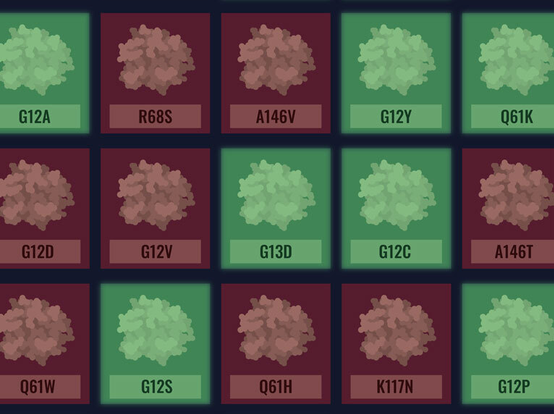Some patients are not eligible for targeted treatments for colorectal cancer because they have cancer-promoting mutations that are believed to cause resistance to these drugs. Now, researchers combined mathematical modeling with experimental cancer cell biology to determine why KRAS G13D is a biomarker for sensitivity to epidermal growth factor receptor (EGFR)-targeted therapies. This finding suggests that personalized medicine may benefit from using biomarkers based on biophysically defined subsets of mutations instead of gene-based and allele-based biomarker strategies.
The findings were published in Cell Reports in the paper, “Identification of RAS mutant biomarkers for EGFR inhibitor sensitivity using a systems biochemical approach.”
“Colorectal cancer patients who have tried all of the standard treatment options but still seen their cancer progress are in need of new options. Our study suggests that one already available targeted therapy could benefit up to 12,000 additional colon cancer patients every year,” said Edward Stites, MD, PhD, assistant professor, integrative biology laboratory at the Salk Institute for Biological Sciences. “Our findings are preclinical, and we hope this research will motivate clinicians to develop clinical trials that further examine our results.”
Cetuximab was the first drug to gain FDA approval to block EGFR activity in colorectal cancer. Since then, other drugs that target EGFR also have received approval. But from the early development of these drugs, doctors believed that patients with a mutation in any one of the RAS proteins would not respond to EGFR drugs. Therefore, whenever molecular testing of a patient’s tumor revealed a RAS mutation, the patient was not offered these targeted therapies.
However, not all RAS mutations are the same. The critical mechanistic difference, the authors noted, between KRAS G13D and the other most common KRAS mutants is impaired binding to tumor suppressor Neurofibromin (NF1). The team hypothesized that impaired binding to NF1 is a “biophysical biomarker” that defines other RAS mutations that retain therapeutic sensitivity to EGFR inhibition.
The researchers combined computational and experimental approaches to find more RAS mutations that should not cause resistance to the EGFR drugs. Using cells from cancers that were identical except for specific RAS mutations allowed them to compare how each specific mutation influenced the response to EGFR-inhibiting drugs. They found that some RAS mutations did not prevent the drugs from working. These experiments also allowed them to validate their computational studies, which helps establish how new computational methods could contribute to improving treatment options for cancer patients.
The investigators also examined how well different RAS mutants bound to NF1. Stites’ previous mathematical models hinted that NF1 could play a key role in the cells’ response to targeted drugs. In their new studies, the researchers revealed that the RAS mutants that do not bind NF1 well retain sensitivity to EGFR drugs, while the RAS mutants that bind NF1 well are resistant to EGFR drugs. This relationship to EGFR drugs was not originally apparent, but the computational modeling was able to uncover it from within the available and varied data.
Ultimately, the investigators identified 10 distinct RAS mutations that do not preclude the use of EGFR inhibitors. Many of the drugs that would work for these mutations are already approved by the FDA for other uses, which means that doctors could start prescribing them for their patients “off label” even before clinical trials are conducted.
Stites stresses that this study also helps to validate the mathematical and computational methods developed by his team. “Models can solve scientific problems that traditional methods cannot,” he said. “We hope that future clinical trials will help identify the magnitude of benefit as well as whether all the RAS mutations we identified are equally sensitive to the EGFR-inhibiting drugs and how other mutations in addition to RAS may influence the strength of the response.”


